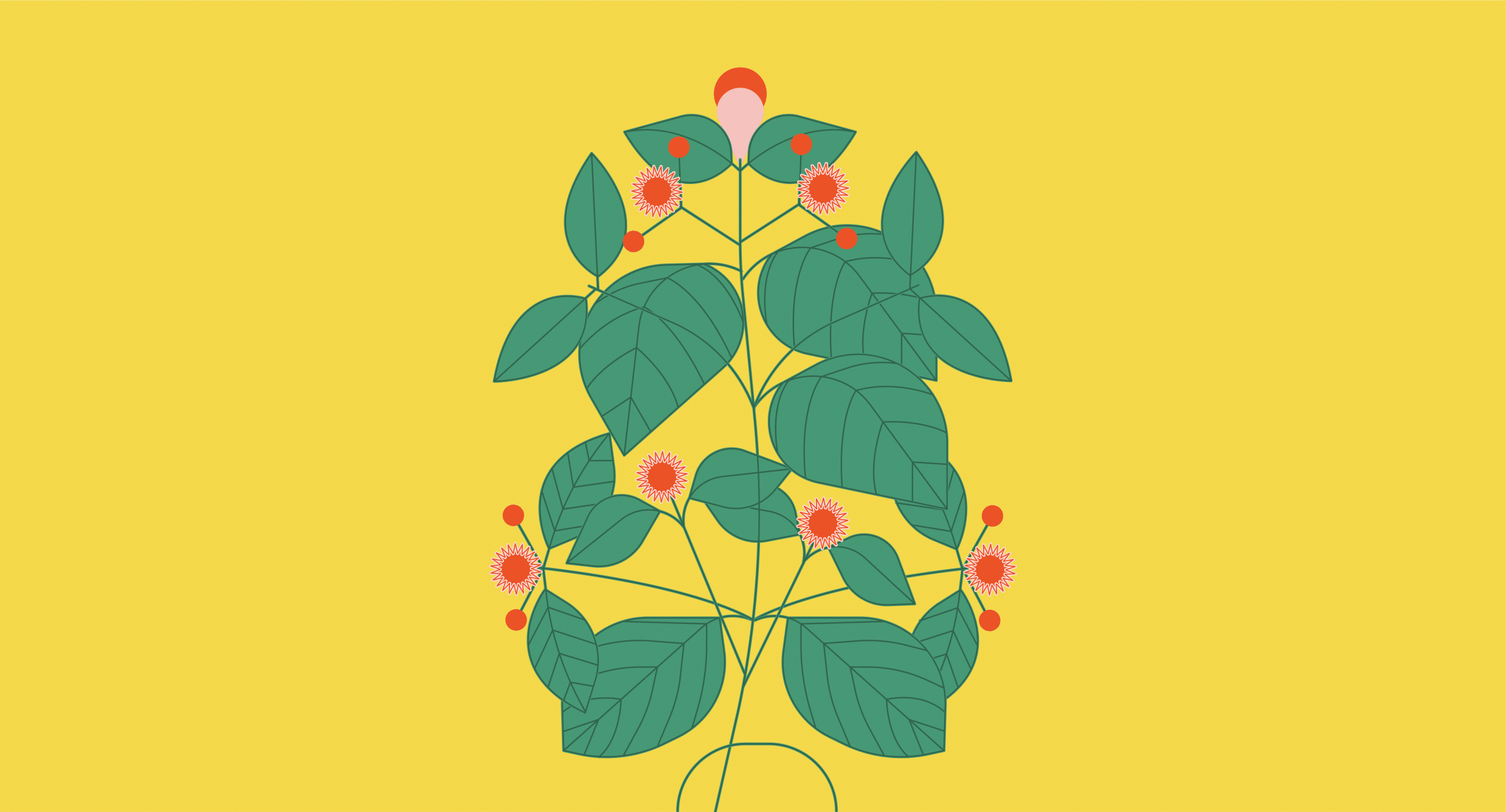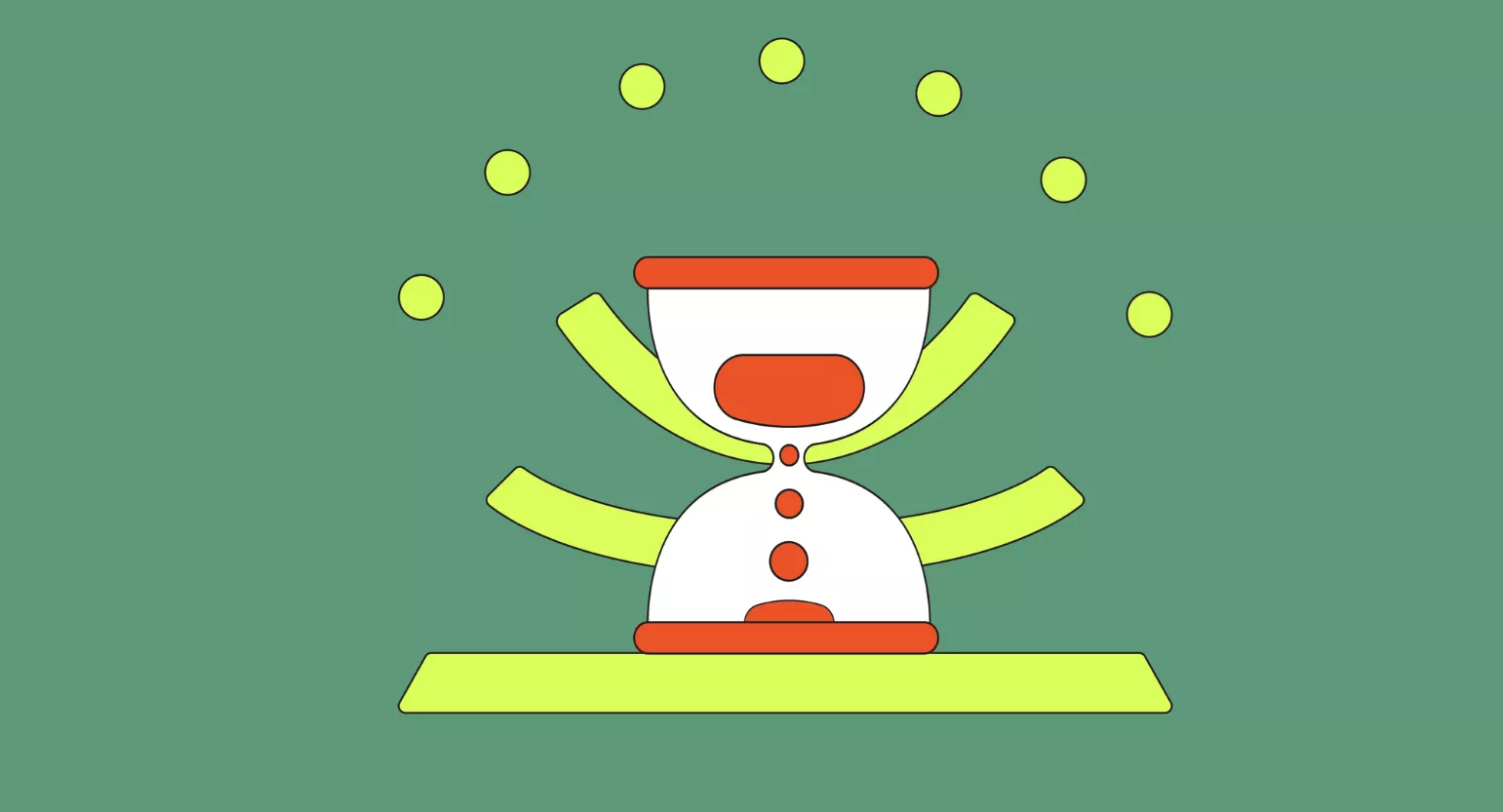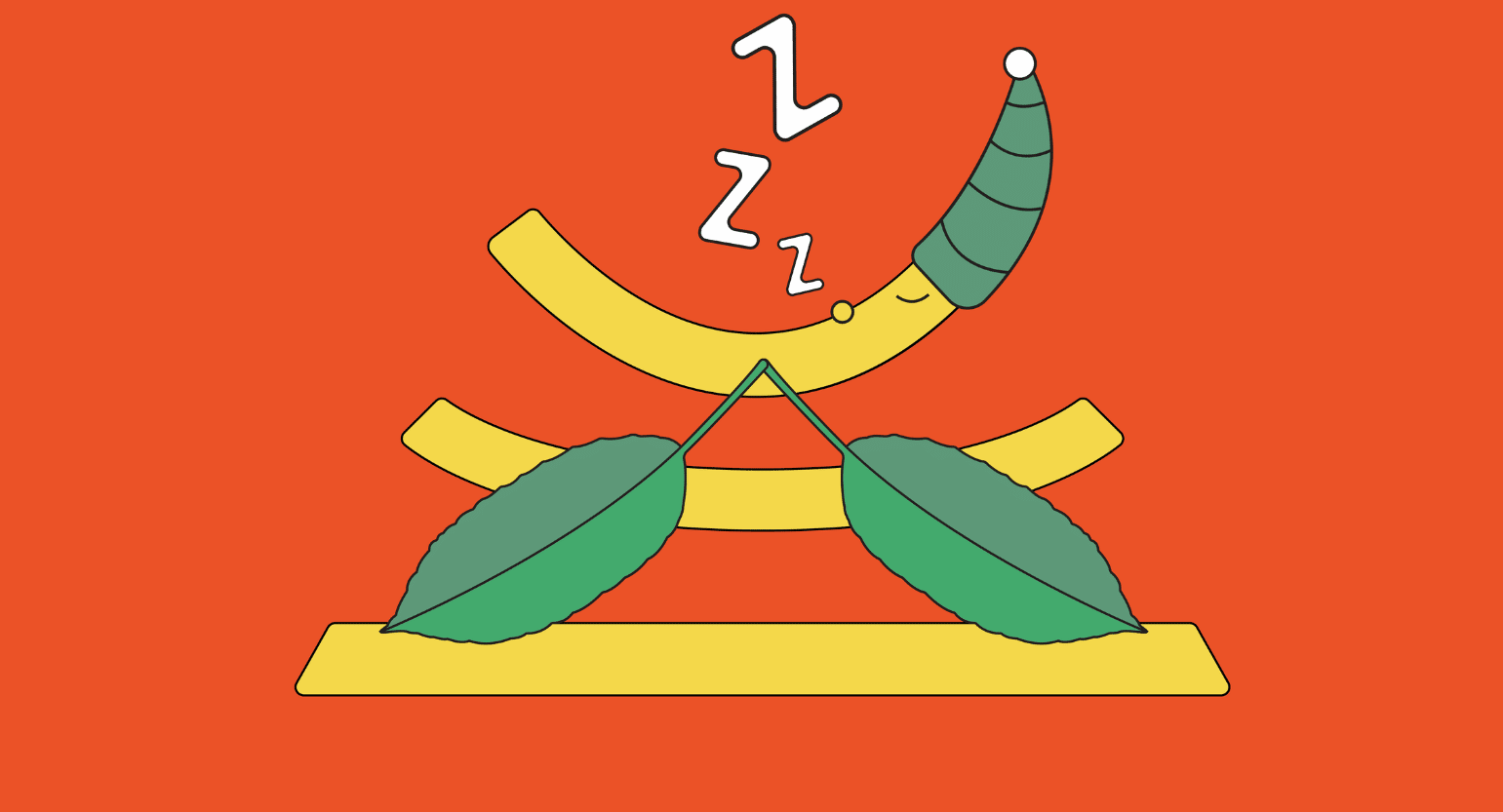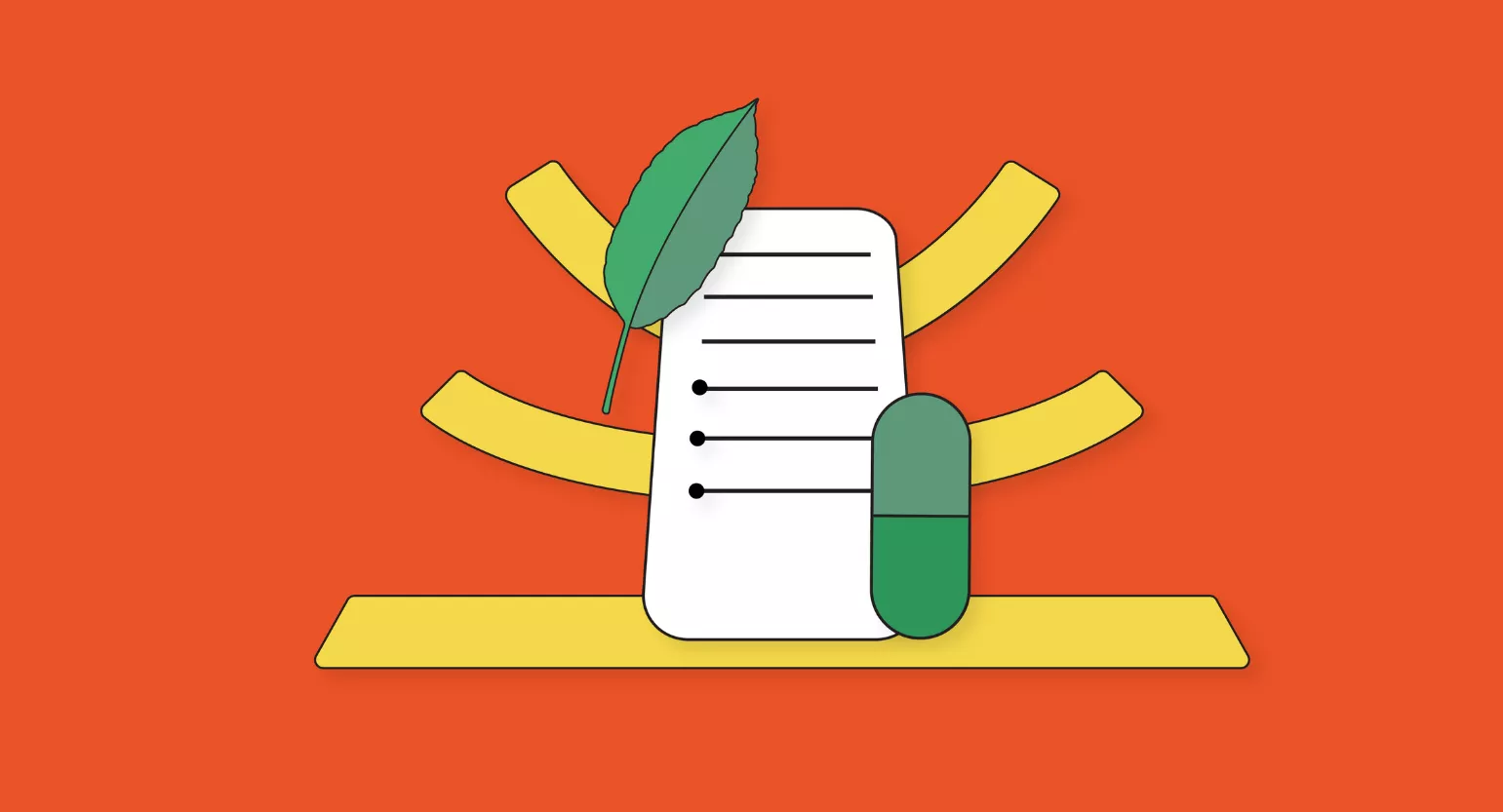What Is Mitragyna javanica?
Mitragyna javanica is frequently compared to Mitragyna speciosa, also known as kratom. Kratom is a powerful medicinal herb that gained popularity across the globe thanks to its potent painkilling, sedative, and stimulant effects.
M. javanica can be a helpful kratom alternative, although it’s not nearly as potent as kratom itself. It contains some of the same alkaloids but lacks the heavy hitters that kratom is well-known for — namely mitragynine and 7-hydroxymitragynine.
The two plants look quite similar — nearly identical — both having tall, sturdy trunks and broad leaves. It can be difficult to tell the two apart without knowing what to look for.
M. javanica provides several benefits. When compared to kratom, these benefits might seem lackluster. However, taken at face value, M. javanica is a relatively potent medicinal plant with a lot of value to offer.
One reason that M. javanica lacks popularity is because of its relative rarity. Even the majority of people living in Southeast Asia are unaware of this particular Mitragyna plant.
The exception to this is Thailand. The plant is widely acknowledged for its medicinal value, possibly due to the government prohibition of kratom in 1979. This widespread prohibition led people to seek alternatives to kratom and likely led to the popularizing of M. javanica.
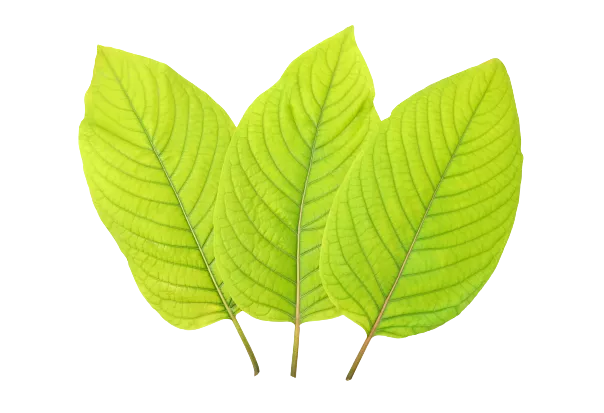
Kratom is known in Thailand as krathumna and is used to manage fevers, muscle pains, diarrhea, and coughs. There have even been cases of people using it to treat malaria.
M. javanica is legal almost everywhere, making it an excellent option for people in areas where kratom is banned.
Effects & Benefits of Mitragyna Javanica
M. javanica is often compared to kratom since it’s known as a kratom alternative.
It’s energizing in lower doses and sedating in higher doses — just like kratom. The differences come in the details.
M. javanica is weaker overall than kratom for the usual benefits (energy, pain, sleep, anxiety) but stronger in other areas.
For example, M. javanica is a much stronger immune booster and infection-fighter than kratom. It’s used to help manage blood pressure, promote general health and well-being, and elevate the mood without being too sedating in higher doses.
Mood-Support
M. javanica lacks mitragynine, the primary alkaloid in kratom that helps balance mood and decreases anxiety and stress. However, M. javanica’s main alkaloid, mitrajavine, seems to act similarly to mitragynine. Though less potent, it has the potential to react with opioid receptors, causing a short-term spike in mood and promoting relaxation.
Comparing M. javanica to kratom in this regard will lead to underwhelming results. However, anyone unfamiliar with kratom will likely find this plant provides mood-balancing benefits.

However, M. javanica works only as a tool to help you make positive long-term changes. Don’t rely solely on the plant to ‘cure’ your anxiety; that’s not a sustainable solution.
Instead, take advantage of its energy and mood-boosting properties to make the lifestyle changes you need to be happy.
Pain Relief
Most plants in the Mitragyna genus possess some painkilling properties, and M. javanica is no exception. While it’s not quite as potent, it’s still useful as a muscle relaxant, sedative, and pain reliever.
Higher doses produce a more pronounced effect; however, don’t expect to experience the same relief you’d get from kratom.
Antimicrobial Action
M. javanica contains at least 73 endophytic fungi. This might sound scary, but these particular fungi possess strong antimicrobial effects, making the plant useful for anyone hoping to fight off a microbial infection.
Blood Pressure Regulation
Ajmalicine is the alkaloid in M. javanica that may help reduce blood pressure by decreasing activity and relaxing smooth vascular muscles.
Managing Opiate Withdrawal Symptoms
Kratom is a powerful tool for overcoming opioid withdrawal symptoms. Because of the mitrajavine, M. javanica can also help manage withdrawal, though it’s not as strong. Because it’s so mild, it might not be potent enough to address withdrawal symptoms caused by severe, long-term addictions. However, it may provide some relief for low-to-moderate withdrawal.
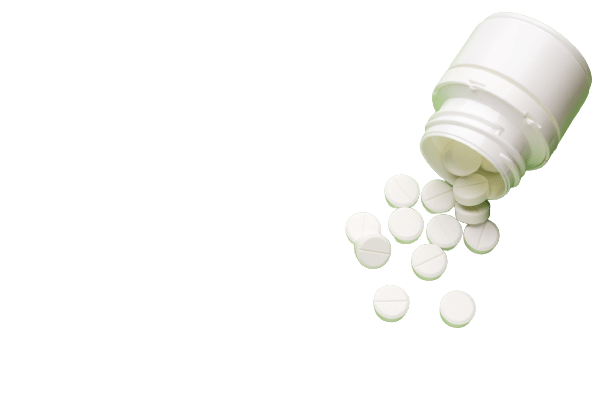
Anything with opioid properties can cause addiction; be careful when using any medicine, whether herbal, prescription, or over-the-counter.
Alkaloids Found In Mitragyna Javanica
We don’t yet know the complete alkaloid profile of M. javanica because it hasn’t been entirely mapped out yet. However, we know it lacks two of the most prominent alkaloids found in kratom: mitragynine and 7-hydroxymitragynine.
These alkaloids act as partial agonists of opioid receptors, making kratom a potent analgesic.
However, several alkaloids are in both M. javanica and kratom, including ajmalicine, mitraphylline, and isomitraphylline.
Mitrajavine is the dominant alkaloid found in M. javanica. Its role is not fully understood, but it seems to have similar properties to mitragynine and acts as an analgesic — on a lesser level.
Ajmalicine is found in several other plants and is an antiarrhythmic agent, helping stabilize abnormal heart rhythms. This alkaloid also shows potential to improve Alzheimer’s Disease.
Isomitraphylline is possibly neuroprotective. As an oxindole alkaloid, it’s likely anti-cancer, anti-diabetic, antibacterial, antioxidant, and analgesic.
Mitragyna Javanica Dosage
There are no set dosage guidelines for Mitragyna javanica. In fact, there aren’t even any regulated dosages for a plant as popular as kratom. Nonetheless, the popular consensus is that you should dose M. javanica as follows:
Light Dose (For Energy & Focus)
1–3 Grams
This is a good starter dose and can help familiarize you with the plant. If you don’t feel much, don’t be surprised. It’s always wise to start small, but feel free to try a medium dose if you’re underwhelmed after a couple of hours.
Medium Dose (For Anxiety & Pain Support)
3–6 Grams
If you’ve had some experience using kratom or other Mitragyna plants, then you might want to start with a mid-sized dose. This dose is more likely to produce positive benefits and is less likely to overwhelm someone familiar with the plants.
High Dose (For Pain & Sleep-Support)
6–10 Grams
If you’re trying M. javanica and have a tolerance to kratom, or if you’re using it to manage withdrawal, you’ll want to use a high dose. This will probably be too much for most people, but someone with a hefty kratom tolerance might need this amount to feel anything.
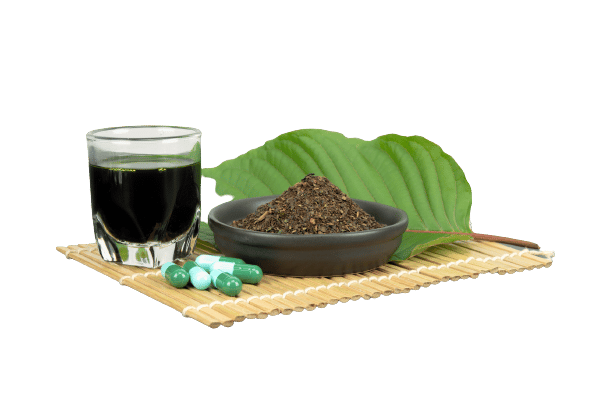
How to Take Mitragyna Javanica
Just like kratom, there are different ways that you can consume M. javanica.
Toss-and-Wash Method
The most common way to use kratom is known as the toss-and-wash. This method is by far the quickest and delivers the most effects for the least amount of preparation. Unfortunately, this is also the most disgusting.
To toss and wash, simply toss your dose of javanica powder into your mouth, followed quickly by a mouthful of water to swish the powder away before its flavor and texture have a chance to register in your brain.
Kratom (Javanica) Tea
It’s much more preferable to brew the powder into tea. You can soak your M. javanica in hot water and drink it down, or you can strain it. If you don’t plan to swallow the plant matter at the bottom of your tea, simmer it for 10-20 minutes to draw out more alkaloids.
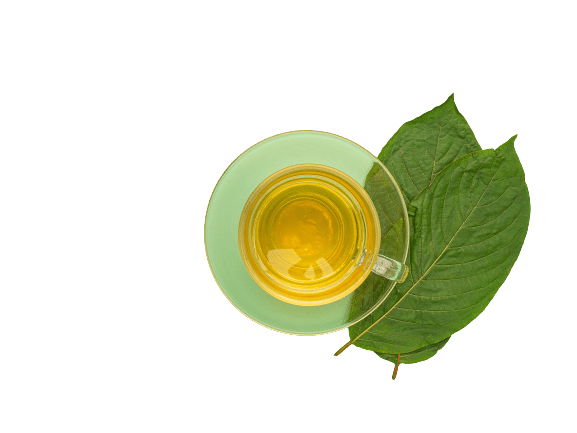
You can also purchase empty gel capsules and pack them with M. javanica. This is a good way to know exactly how much you’re taking and eliminates raw powder’s unpleasant taste and consistency.
Where To Buy Mitragyna Javanica
The easiest and safest way to buy M. Javanica will likely be through a certified kratom vendor in your country.
To be honest, it’s difficult to find the javanica species, but as more people become aware of this kratom alternative, more vendors will likely begin to stock it in the future.
Until then, we don’t have a solid recommendation for where to buy this particular species.
Mitragyna Javanica Precautions
As with any medicinal herb or supplement, you should be cautious when using Mitragyna javanica. It might not be as potent as kratom, but that doesn’t mean it’s without risks.
First, M. javanica does contain some alkaloids that affect the endogenous opioid system. It could cause dependence if it’s taken every day at large doses.

Second, it can also cause a decline in blood pressure, so if you’re taking any medication for hypo- or hypertension, you should speak with a doctor before using M. javanica.
If you’re using M. javanica to ease yourself off of kratom, then you should be extra careful. The more frequently you become addicted to a substance, the more your body remembers the feel of addiction. This means that you can become increasingly prone to developing physical dependence and experiencing withdrawal.
You may also experience a cross-tolerance. If you’ve become tolerant to some of kratom’s alkaloids, then you’ll likely not feel the effects of the alkaloids in M. javanica as much as you would otherwise.
Side Effects of Mitragyna javanica
M. javanica and kratom have the same side effects.
Though usually minor, they’re worth watching out for; a simple dose adjustment is usually enough to stop them.
The most common side effects of kratom and its javanica cousin include:
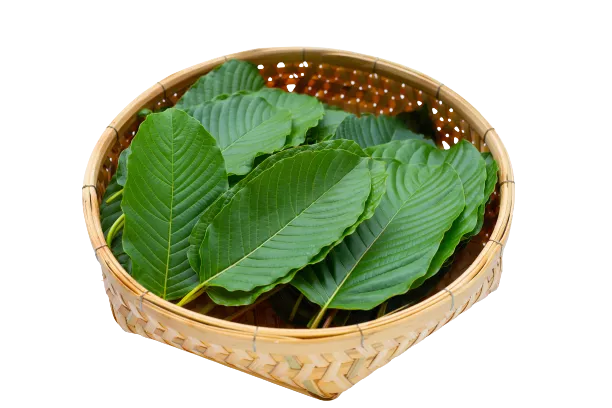
Final Thoughts: Is Mitragyna javanica a Good Alternative to Kratom
Mitragyna javanica is a medicinal plant and shares many of the same benefits as kratom, although it’s less potent overall. While this may result in less stimulating effects, M. javanica carries a lower risk of side effects and tends to be a little gentler than kratom.
If you think M. javanica sounds like it could benefit you, don’t hesitate to look for a trustworthy vendor.

